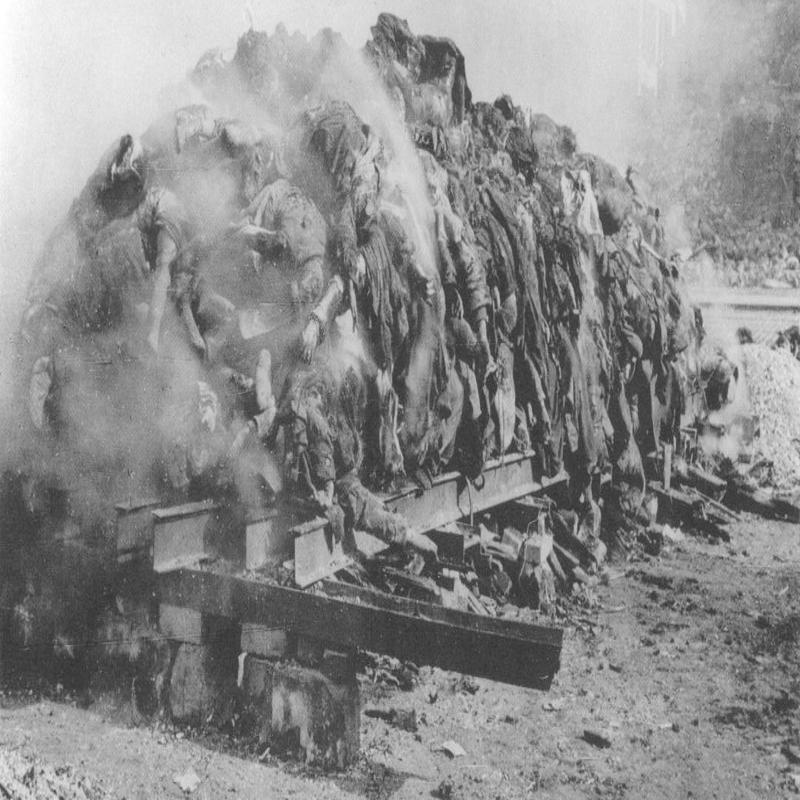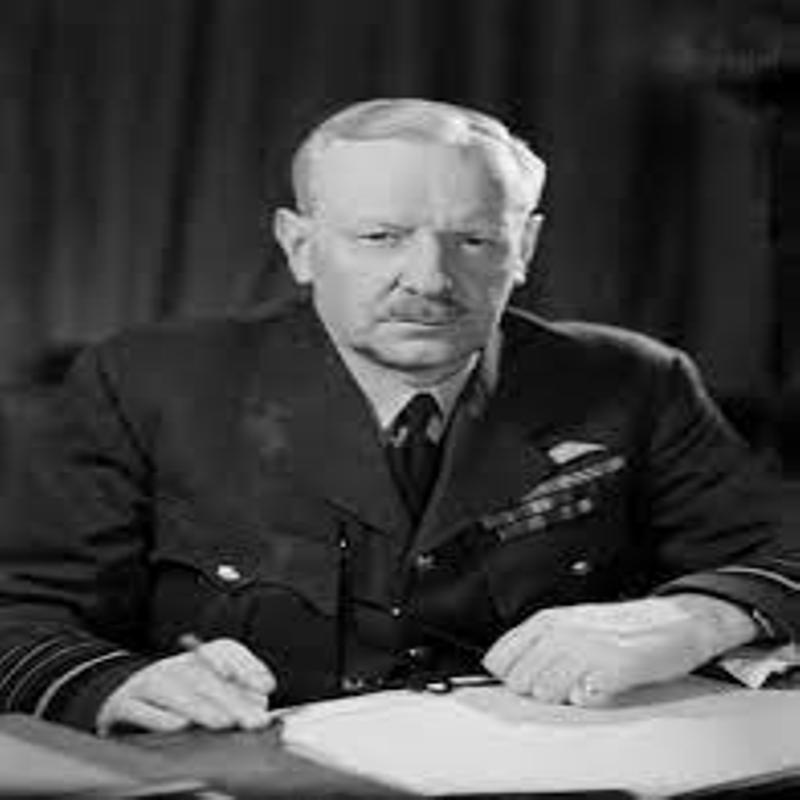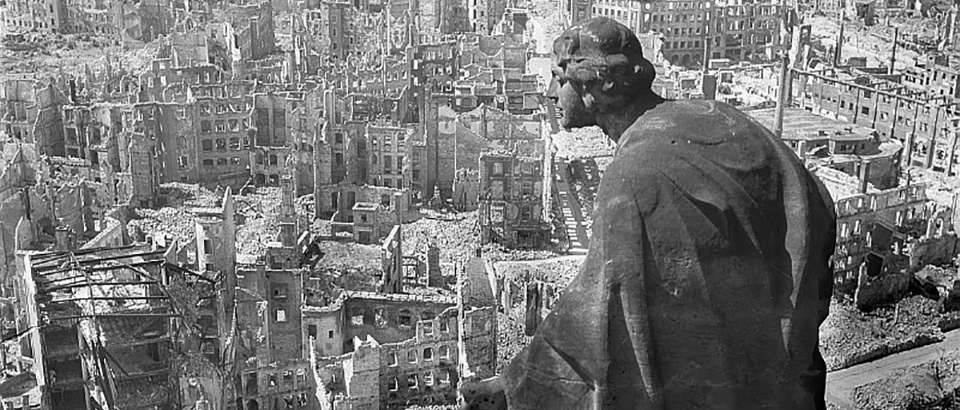The Bombing of Dresden
Posted on 16th July 2021
The Bombing of Dresden known as the Jewel on the Elbe, a city renowned for its galleries, its museums, its Cathedral and its Baroque medieval town centre remains one of the most controversial of the war.
There is no question that its industries had been utilised to assist the German war effort but with some 110 factories employing 50,000 workers it was by no means a major centre of war production. It was, however, an important rail terminus and served as a staging post for the retreating German Army and the many hundreds of thousands of refugees fleeing the Russian advance in the East.
That it should be a considered a legitimate military target seems reasonable but there were others more significant while the scale of the assault and the timing of it less than three months before the end of the war and when German defeat was all but inevitable has led many to consider it a deliberate act of terror, possibly even a war crime.
Dresden also lay directly in the path of the advancing Soviet Army which has led some to believe that the city’s destruction was a warning to the Russians of the Western Allies power and of their willingness to use it. An internal Royal Air Force memo of January 1945, detailing the reasons for the forthcoming attack on Dresden which ended with the words “. . . and incidentally to show the Russians when they arrive what Bomber Command can do,” would only seem to confirm this.
Dresden had been spared the worst of the bombing raids over Germany and the city had only been targeted twice in five years and both times by small-scale raids that were intended merely to disrupt rail traffic. Indeed, the city’s death toll up to this point stood at only a little over 400.
At 17.20 hours on the 13 February 1945, a British Pathfinder force from 83 Squadron took off from airfields in England for the 700 mile flight to Dresden. It was their job to drop magnesium parachute flares likened by the Germans to Christmas Trees, to light up the area targeted for the main Bomber force that was to follow. As the Pathfinder force turned for home some 245 Lancaster Bombers carrying 500 tons of high explosives and 375 tons on incendiaries followed in their wake.
Dresden was largely undefended, anti-aircraft defences on the ground were light and the Allied Bombers were in more danger from collision and engine failure than they were enemy flak while there were only ten-night fighters in the vicinity and there was a reluctance to scramble these to oppose such a large Bomber force.
The silence of a still winter night in Dresden was broken by the sound of air-raid sirens at 21.51 hours just 20 minutes before the first bombs landed. It was not a city well-equipped to deal with a major bombing raid. It had only one public shelter of any size positioned under the main Railway Station with a maximum capacity of just 6,000 people in a city with a population of 500,000 so most people were reduced to sheltering in the cellars of their homes or fleeing to a place of apparent safety.
The bombing raid that night was by far the heaviest the city had yet endured but it wasn’t to be the end of their suffering. A further 529 Lancaster Bombers carrying 1,800 tons of high explosives were already on their way and planned to arrive three hours after the first raid just as the clean-up operation in the city was underway. They were also carrying 500-pound bombs, the so-called “two-ton cookies” designed to cause maximum destruction and create space for the air to flow maximising the effect of the incendiaries soon to follow.
The Second Raid began at 01.21 by which time there was no electricity in the city and the only warning of the raid that could be given was with hand-held sirens and loud-hailers the noise from which could barely be heard above the sound of falling buildings.
The city authorities had earlier ordered that the thick cellar walls that separated homes be knocked down and replaced by a thin partition that could easily be broken through in an emergency. In the firestorm that now engulfed the city this was to prove a disaster as families fleeing their blazing homes simply ran into the inferno next door.
The noise was deafening as the massive two-ton cookies detonated destroying entire buildings and causing the ground to tremble. With large areas of the city quickly flattened a wilderness of debris and dead bodies wind- swept and burning whipped up the fires of the incendiaries until they raged and soared.
People were trampled to death as they tried to flee the inferno and force their way into the few public places to have been utilised as ad hoc air-raid shelters whilst many others were suffocated as the oxygen was drawn from the air. With no air to breathe people simply collapsed in the street as if struck down by an invisible force. The heat was so intense that the concrete roads melted, and people could be seen running with their feet burned and smouldering. Some people jumped into the fountains and river to avoid the flames only to find them also ablaze and were burned or boiled to death. Others in their desperation leapt into the reservoirs with their high smooth walls and with no way of escape, drowned. Women fleeing with babies in their arms could quite literally see them incinerated before their eyes.
A survivor remembered:
To my left I suddenly see a woman. I can see her to this day and shall never forget it. She carries a bundle in her arms. It is a baby. She runs, she falls, and the child flies in an arc into the fire. People in front of me scream and gesticulate with their hands, and then—to my utter horror and amazement—I see how one after the other they simply let themselves drop to the ground.
Another described how:
So many people were horribly burnt and injured. It became more and more difficult to breathe. It was dark and all of us tried to leave this cellar with inconceivable panic. Dead and dying people were trampled upon; our luggage was left or snatched up out of our hands by rescuers. The basket with our twins covered with wet cloths was snatched up out of my mother's hands and we were pushed upstairs by the people behind us. We saw the burning street, the falling ruins and the terrible firestorm. My mother covered us with wet blankets and coats she found in a water tub.
We saw terrible things: cremated adults shrunk to the size of small children, pieces of arms and legs, dead people, whole families burnt to death, burning people ran to and fro, burnt coaches filled with civilian refugees, dead rescuers and soldiers, many were calling and looking for their children and families, and fire everywhere, everywhere fire, and all the time the hot wind of the firestorm threw people back into the burning houses they were trying to escape from.
But this was not the end of the nightmare - the following day at 12.17 hours 316 Flying Fortresses of the United States 8th Air Force dropped their load of 771 tons of high explosives on the city, though some did miss their target mistaking the Czech capital Prague for Dresden - it provided little respite.
The planes that attacked Dresden were over the city for little more than an hour but the destruction they wrought was unprecedented even by the standards of the 1,000 Bomber Raids that had done so much to destroy the infrastructure of Germany during the previous two years.

The Germans were as always thorough in their estimation of the damage: the old town centre of the Altkmark had been utterly destroyed and few people resident there had survived, 78,000 residential properties in the city as a whole had been destroyed, as also were 640 shops, 64 warehouses, 63 Administrative and Government Buildings, 39 schools, 31 Storage depots, 31 hotels, 24 banks, 19 hospitals, 17 churches, the Zoo, the waterworks, the railway, and 19 ships had been sunk on the River Elbe, and so on.
Prisoners of War held in camps nearby were brought into the city to clear up the mess and dispose of the bodies. Some were buried with due ceremony but in the worse affected areas the bodies were simply loaded onto carts and flame throwers used to set them alight before the remains were dumped into mass graves.
The Propaganda Minister Joseph Goebbels who did not shy away from the horror visited the city and met with survivors and those organising the clean-up operation. He knew that as in Britain during the Blitz such bombing raids only stiffened the German peoples will to resist. His presence showed they had not been abandoned and it was generally well received.

Some 200,000 refugees in the city at the time make any accurate assessment of casualties impossible. Also, the remains of many of the dead had been reduced to little more than cinders while others who had come together for safety had been quite literally welded as one by the intense heat.
The death toll at the time was put at 22,000 with a further 35,000 reported missing, 25,000 of whom would never be satisfactorily accounted for. Joseph Goebbels would exaggerate the figures for propaganda purposes to over 100,000 and for a long time this was widely believed.
More recent research suggests a death toll of around 22,000 with some 35,000 others badly burned and seriously injured.
It was however, the most deadly and destructive bombing raid of the war in the West though it pales a little when compared to the fire-bombing of Tokyo and the dropping of the Atomic Bomb on Hiroshima and Nagasaki.
The destruction of Dresden had also been achieved at little cost to the Allies just 6 British planes lost (3 by accident) and 1 American.
The raid on Dresden was the culmination of Air-Chief Marshal Arthur “Bomber” Harris’s strategy to destroy the German capacity to fight and the will of its people to continue the struggle through bombing alone.

A grimly determined and humourless man Harris had been appointed Commander-in-Chief of Bomber Command in February 1942, a time when Britain had just come through the darkest period of the Blitz and appeared to have no effective means by which to hit back at Germany.
He had studied closely German tactics of aerial bombardment and believed that he could bring Germany to its knees through intensive and relentless bombing. He had announced in an early radio broadcast that Germany: “Had sowed the wind, and now they are going to reap the whirlwind.”
It was he who initiated the thousand Bomber Raids on Germany the first of which took place over Cologne on the night of 31 May 1942. It became known as Strategic Bombing, though Harris knew full well that only one-in-three bombs ever fell within five miles of its intended target. In truth he was an advocate of blanket bombing and was never shy in expressing its value as a terror tactic.
In the summer of 1942, Harris had been reinforced by the arrival of the U.S 8th Air Force which preferred the strategy of daylight precision bombing raids. It was now possible to bombard Germany day and night.
Whereas Allied propaganda was quick to declare the intention of the bombing raids was to destroy German munitions factories and disrupt production thereby curtailing its ability to sustain the war effort, Harris remained in no doubt as to its intention to spread terror and break the German will to fight: “The destruction of houses, public utilities, transport and lives, the creation of a refugee problem on an unprecedented scale, and the breakdown of morale on both the home and battle front, by fear of extensive and intensified bombing, is my policy.”
The British Prime Minister Winston Churchill frequently expressed moral scruples over the bombing campaign saying after the report of one such raid, “Are we beasts.” But Harris acted with the full endorsement of the Prime Minister and the war-time Coalition Government.
The bombing raids over Germany were to claim more than 600,000 civilian lives but the death toll among Allied air crews was also high. In one raid alone over Nuremburg on 30 March 1944, 94 bombers were shot down and 71 seriously damaged. In total 55,573 British and Commonwealth airmen were to die along with 26,000 Americans.
Even so, the controversy over Dresden was almost immediate with people in high places shaking their heads and wringing their hands while various inquiries were established to investigate the facts. But despite the criticism that was building Arthur Harris refused to be cowed.
He told those willing to listen that Dresden was a centre of government, a hive of munitions factories and a major transport hub. That it wasn’t any longer was down to him.
The bombing of Dresden was justified he declared and the fact that Germany was already beaten did not make it less so:
“Attacks on cities like any other act of war are intolerable unless they are strategically justified. But they are justified in so far as they shorten the war and preserve the lives of Allied soldiers. I do not personally regard the whole of the remaining cities of Germany as worth the bones of one British Grenadier.”
At the end of the war Arthur Harris was the only senior British Military Commander not to receive a peerage, though this was later rectified in 1953.
It is unlikely that the bombing of Dresden and the firestorm that subsequently engulfed it altered the course of the war in any way at all. This must have been something that was apparent at the time, so whether it was a deliberate attempt to terrorise a current enemy and at the same time seek to intimidate a future one remains a matter of debate.
It is a subject that remains controversial to this day.
Share this post:





